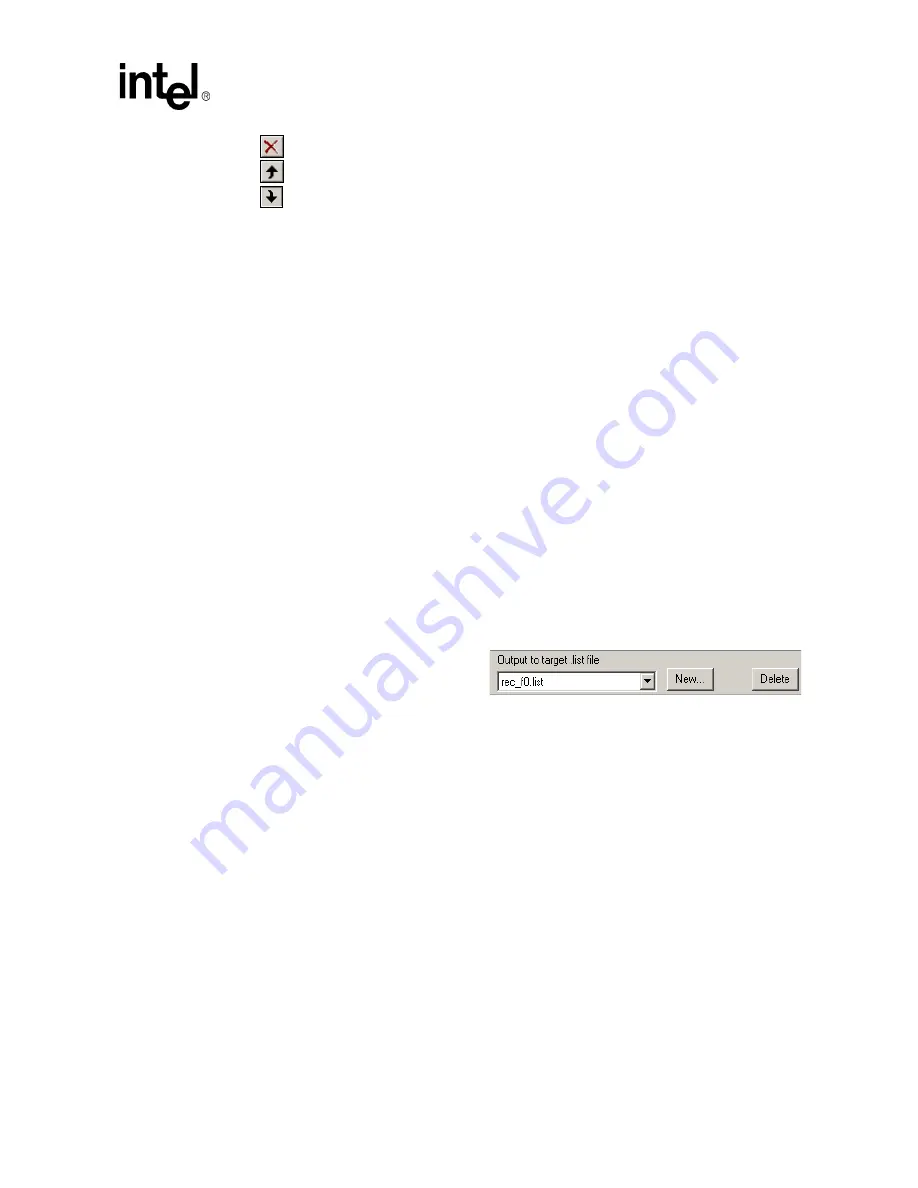
Development Tools User’s Manual
43
IXP2400/IXP2800 Network Processors
Developer Workbench
•
A
button to delete an included path from the list.
•
A
button to move an included path up the list.
•
A
button to move an included path down the list.
Absolute versus Relative Paths:
Regardless of whether the path information is entered in an absolute or relative format, it is
automatically converted to a relative format. This allows the project to be moved to other locations
on a system or to other systems without rendering the path information invalid in most instances as
long as files are maintained in the same relative locations. This path information is passed to the
Assembler so it may locate the files referenced in #include statements in the source code. It is also
used by the dependency checker for locating assembly source files in the project.
2.6.2.3
Specifying Assembler Options
To specify Assembler options, do the following:
1. On the
Build
menu
,
click
Settings
.
The
Build Settings
dialog box appears.
2. Click the
Assembler
tab.
The .list File:
The
Output to target .list file
list allows you to select a .list file from the set of .list files that are
currently defined in the project. All other controls on the page are updated according to which .list
file you select in the list.
Insert file:
1. On the
Assembler
tab, click
New
.
The
Insert New List File into
Project
dialog box appears.
2. Select a path for the .list file.
3. Type a filename.
You cannot insert a .list file that has already been inserted into the project.
4. Click
Insert List File
.
This closes the dialog box and adds the new filename to the list. The file’s path appears in the
read-only
Path of target .list file
box. The rest of the boxes assume default values.
Delete File:
To delete a .list file from a project, click
Delete
. This removes the .list file currently selected in the
list box from the project. All references to the file on the
Linker
page are removed. The actual .list
file, if it exists on disk, is not altered or deleted.






























